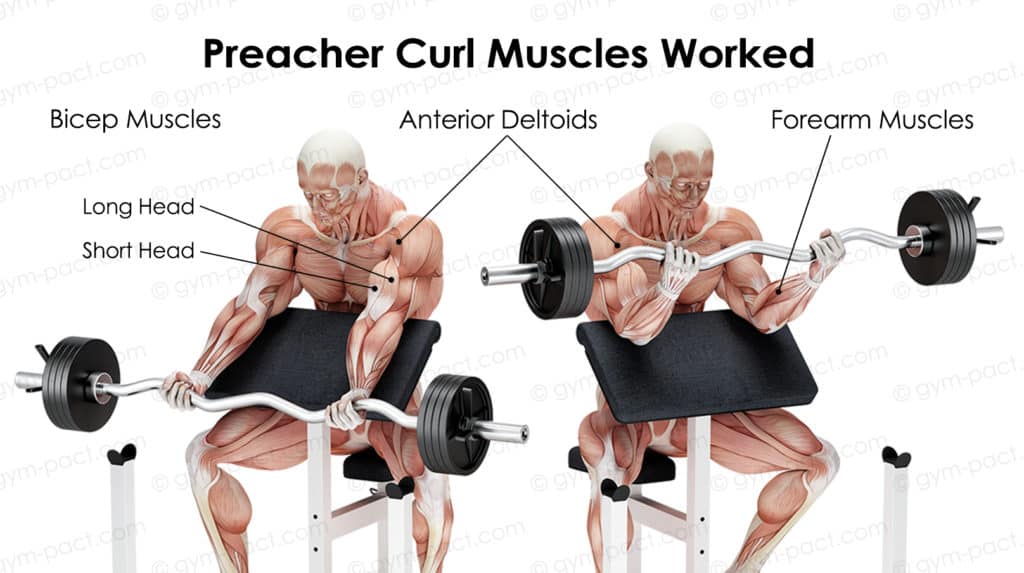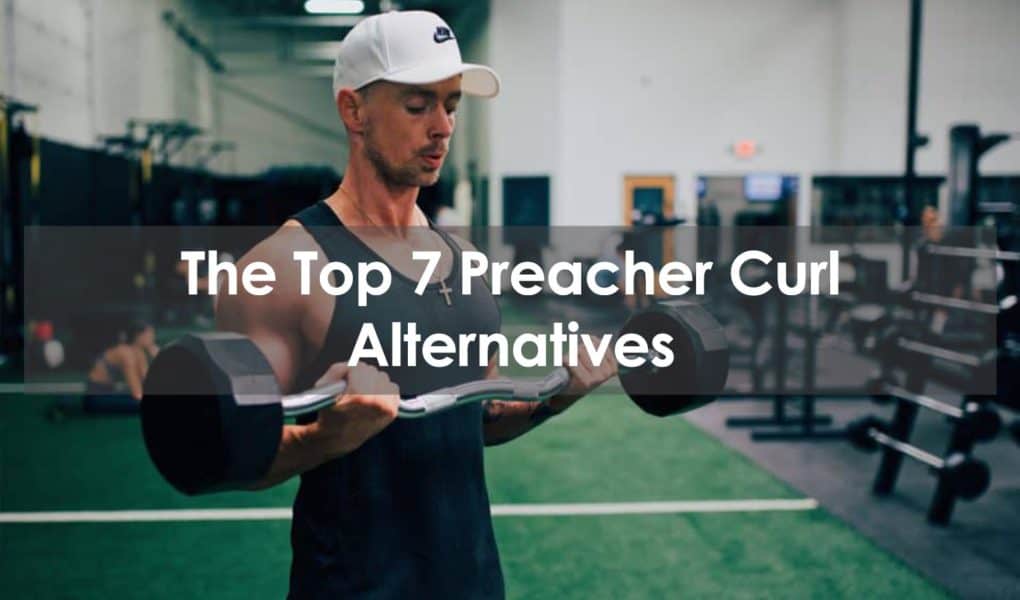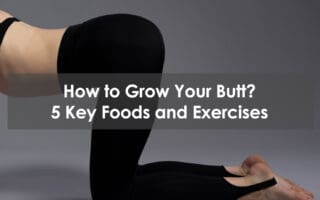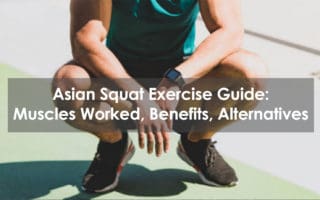If you want biceps, you need to exercises that require elbow flexion. Exercises that isolate the biceps with elbow flexion are known as curls. There are a huge variety of bicep curls that exist. Some with free weights, some with machines, and some with cables. One of the most popular exercises to creating a defined bicep peak is known as preacher curl. These are so effective as they utilize a slanted pad to place your arms. This eliminates all other muscles and body motion which will place all the stress on your biceps.
The Muscles Worked During A Preacher Curl
The preacher curl is going to primarily work the biceps, particularly the short head. The biceps are comprised of two heads (bi=two), a long head and a short head. The short head is located on the inside of the arm and the long head is located on the outside of the arm.
For bodybuilders, the short head is of special concern as it is what is responsible for giving the bicep its mass. Also, when you flex, your short head muscle is what’s facing the audience. Therefore, if you want to build huge arms, the short head needs to be worked.

While the preacher curls isolate the biceps, they will still work some other muscles. The secondary muscle worked are the forearms which are contracted isometrically. This is to keep the wrists from hyper extending under the force of the weight. While not excessive, the deltoids (primarily anterior deltoids) will also activate as a synergist muscle to allow the biceps to flex.
Best Preacher Curl Alternatives
1) Wall Curls
Wall curls are a simple yet devastatingly hard exercise to do. The exercise is basically a normal bicep curl that is performed while standing with your back against a wall. What this does is effectively removes any type of lean or sway from your body. Further, you want to have the back of your arms against the wall which will remove any motion from your arms. One rep of these and you will realize just how much movement you actually use to perform normal curls.
Equipment Needed
- Dumbbells
- Barbell or EZ-Curl Bar
- Sturdy Wall
How To Perform
- Grab your chosen implement and stand flush against a wall
- Make sure your back and arms are touching
- Perform your curls as normal
2) Sitting Dumbbell Curls
Sitting dumbbell curls are perfect as they again, will take out some body movement as you are sitting down. However, you are still allowed a little sway. This will allow you to use a heavier load.
Equipment Needed
- Weightlifting chair or bench
- Dumbbells
How To Perform
- Sit down in the chair with your feet planted firmly on the ground
- Pick up your dumbbells and let them hand to your side
- While keeping your arms as still as possible, curl the dumbbell up
- As mentioned, this movement can allow a minimal amount of movement. Just don’t let your elbows to come out much farther than your stomach.
3) Inclined Dumbbell Curls
Inclined dumbbell curls take the efficiency of the sitting dumbbell curls and takes out even more body movement. This movement is done with an incline bench set at an angle of about halfway between flat and straight up (135 degrees), or raise the bench a little higher. Because you are laid back, you are allowed zero body movement.
Equipment Needed
- Adjustable Bench
- Dumbbells
How To Perform
- Set the bench at and angle at about 135 degrees (half way between straight up and back)
- Lay on the bench with your back pressed firmly against the pad and feet planted
- Allow your arms to hang freely
- Perform your bicep curl by not allowing too much forward movement of the elbow
4) Spider Curl
This is very similar to the inclined dumbbell curl except one major difference, you lay in the prone position (laying with chest on the pad). This and a traditional innclined dumbbell curl are perhaps the most popular exercise for bodybuilders who are specifically trying to hit the short head.
Equipment Needed
- Inclined bench
- Dumbbells
How To Perform
- Set the bench up at a slight incline
- Lay down on the bench so that your chest is pressed against the pad and your feet are firmly planted.
- Perform the bicep curl with slow and controlled manner
5) Concentration Curl
The concentration curl is about as close to a preacher curl you can get without doing a preacher curl. The motion is relatively the same but instead of a platform to minimize arm movement, you will your leg. Further, you will only use one arm at a time. These are very effective when done with light weight
Equipment Needed
- Bench
- Dumbbells
How To Perform
- Sit on the bench with your legs on the same side
- Be sure your legs are firmly placed on the ground
- Place one arm on your leg by setting the elbow on the inside of your leg, a little above your knee
- Pick up the dumbbell and perform your curl
- You can use your other arm to further stabilize your lifting arm
6) Controlled Eccentrics
The eccentric portion of a movement (when the muscle is being stretch and becomes longer) is vital for muscle growth. In fact, research has shown that the eccentric portion of a movement is actually more responsible than the concentric for hypertophy. This is because this movement can handle a larger load and more stress is placed on the muscle. Eccentric movements are commonly used by top bodybuilders and strength athletes. You can perform this with any implement but it generally works best using both hands such as with a barbell or cable machine with bar attachment.
Equipment Needed
- Barbell OR
- Cable Machine with bar attachment
How To Perform
- You want to use heavy weight, preferably heavier than you can curl or right at the edge
- This means you can cheat the bar up using some body movement or have a friend help.
- The rep starts at the top
- Slowly allow the bar to go down. The eccentric motion should last at least 3 seconds but longer would be ideal
7) Floor Curls
Floor curls are similar to wall curls, except you’re laying on the floor. However, there is one big difference. You are able to alter the angle of the curl. This is because this motion requires the use of a cable pulley machine which means you can adjust the height. There is no optimal angle so just use different angles regularly to provide a slightly different stimulus.
Equipment Needed
- Cable Pulley Machine
- Generally performed with a bar but single handles could also be used
How To Perform
- Set the cable so that it will be slightly above your waist at a minimum
- Grab the bar and lay down with your feet towards the cable
- Curl the bar up to your chest
Build Some Big Arms
With these additional exercises, you’ll definitely see some bigger arms soon. Biceps seem to work best by training them 2-3 times a week so work this into your program if you are really wanting to increase the size of your arms.
Frequently Asked Questions
Are preacher curls safe?
Yes. Preacher curls are safe. Some will raise a concern due to the stress that it can put on the elbow. Now, there is some truth to this but it doesn’t mean it’s dangerous, just that you need to follow precautions. The main point is to use light weight. This is an isolation movement. Don’t try to use excessively heavy loads. 80%1RM (8 rep max) should be the max weight you should use.
How do you lift weights with a tennis elbow?
Tennis elbow is an overuse injury that originates on the elbow. The main cause of this is weak forearm flexors. In order to mitigate the risk of tennis elbow, you need to implement plenty of forearm extensor strengthening exercises. However, if you have mild symptoms, you can probably get by (just don’t go too hard). The easiest thing you can do is use a neutral grip for all of your exercises. This takes significant stress off of your forearms.
Do preacher curls work forearms?
YES! Absolutely! Well, assuming you do them with either an underhand or overhand grip. The forearm muscles will work isometrically to maintain stiffness in the wrist joint.







